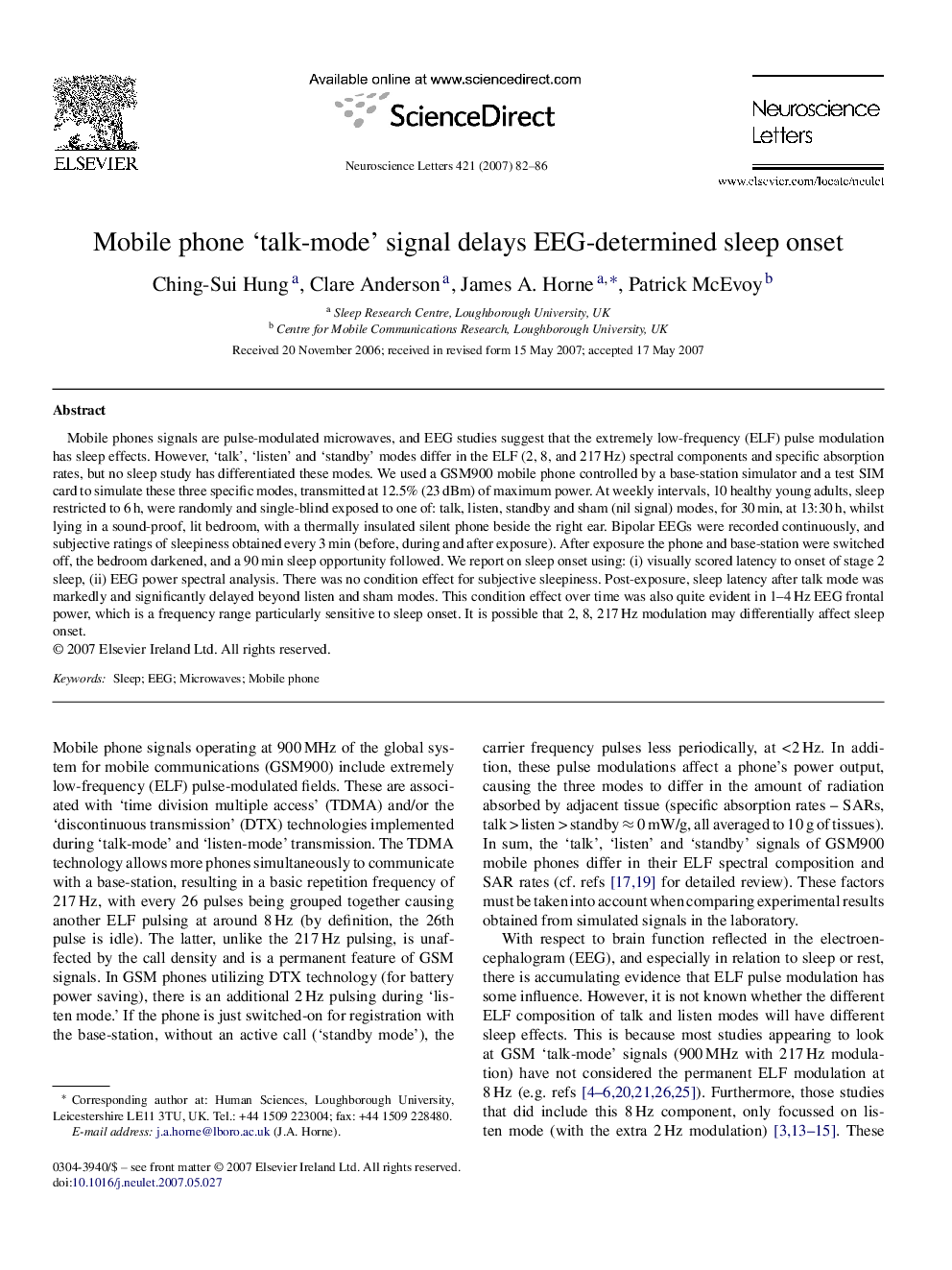| Article ID | Journal | Published Year | Pages | File Type |
|---|---|---|---|---|
| 4349335 | Neuroscience Letters | 2007 | 5 Pages |
Mobile phones signals are pulse-modulated microwaves, and EEG studies suggest that the extremely low-frequency (ELF) pulse modulation has sleep effects. However, ‘talk’, ‘listen’ and ‘standby’ modes differ in the ELF (2, 8, and 217 Hz) spectral components and specific absorption rates, but no sleep study has differentiated these modes. We used a GSM900 mobile phone controlled by a base-station simulator and a test SIM card to simulate these three specific modes, transmitted at 12.5% (23 dBm) of maximum power. At weekly intervals, 10 healthy young adults, sleep restricted to 6 h, were randomly and single-blind exposed to one of: talk, listen, standby and sham (nil signal) modes, for 30 min, at 13:30 h, whilst lying in a sound-proof, lit bedroom, with a thermally insulated silent phone beside the right ear. Bipolar EEGs were recorded continuously, and subjective ratings of sleepiness obtained every 3 min (before, during and after exposure). After exposure the phone and base-station were switched off, the bedroom darkened, and a 90 min sleep opportunity followed. We report on sleep onset using: (i) visually scored latency to onset of stage 2 sleep, (ii) EEG power spectral analysis. There was no condition effect for subjective sleepiness. Post-exposure, sleep latency after talk mode was markedly and significantly delayed beyond listen and sham modes. This condition effect over time was also quite evident in 1–4 Hz EEG frontal power, which is a frequency range particularly sensitive to sleep onset. It is possible that 2, 8, 217 Hz modulation may differentially affect sleep onset.
